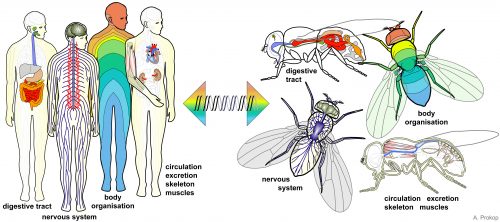A community approach to science communication
Posted by Andreas Prokop, on 14 December 2017

Science communication (scicomm) has become a buzz term in the current science landscape. I fully support its importance and have been a scicomm “activist” for over 6 years. My initiatives promote the enormous importance of Developmental Biology as a key discipline of the biomedical sciences (see our advocacy campaign); within this context, I put specific emphasis on the use of Drosophila as a most powerful tool to advance concepts and fundamental understanding (see our recent publication).

Defining scicomm and its many different facets is not easy. In my interpretation, it means establishing dialogue (in a variety of modalities) between practicing scientists (called “scientists” from now on) and a wide range of target groups to resolve reciprocal misconceptions, learn from one another and achieve mutual benefit.
Direct engagement of scientists with the wider public is usually done at science fairs, school visits, public presentations, etc. Many of these activities tend to be short-lived one-offs that reach a limited amount of people and, at first glance, may appear to be relatively low on ‘impact.’ However, there are opportunities if we open up to dialogue! Genuine engagement with pupils, teachers or visitors at a science fair can be a sobering exercise: the responses you receive make absolutely clear, what topics and arguments come across, excite and are perceived as being important – and it is the “thumbs down” responses which should make us think about our own science! To put it bluntly: if you cannot explain your science and its importance, you either have not thought hard enough and need to refine your explanations, or you are doing the wrong thing and should consider changes in your research direction! If we use scicomm in this way, it will help to align our science with the wider society in the long term; this can be taken even a step further through citizenscience and other forms of actively involving the public in our research. Furthermore, it will provide the refined explanations and elevator pitches with which to advocate our science and engage with journalists to achieve improved and helpful press outlets. Even more, they provide profound rationales and simple narratives that will be as powerful when presenting our own science in grant applications, talks and publications.
Important aspects of scicomm lie in the hands of journalists or teachers. Scientists tend to have little influence on article or school lesson contents, although journalists reach audiences in their millions, and students at schools are the potential future scientists and will constitute and shape the future society which we would wish to embrace science. To engage in true dialogue ….
To read the full content, please see the original publication of this post on PLoS blogs.


 (1 votes)
(1 votes)